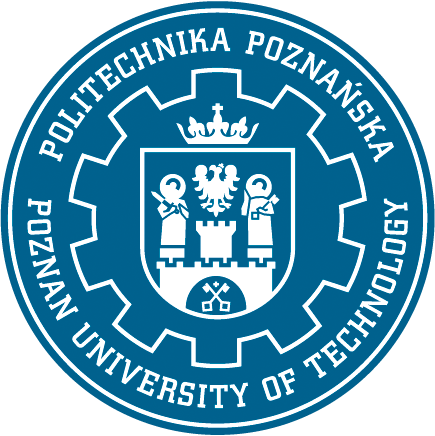PUT

Poznan University of Technology (PUT) was established in 1930. Currently, it is one of the leading technical universities in Poland. PUT trains highly qualified personnel in the broadly defined field of engineering at 10 faculties and 26 fields of studies. Currently PUT employs over 2 thousands people (including 1300 academic staff and over 100 full professors). The University has a modern Centre for Mechatronics, Biomechanics and Nanoengineering.
The PUT is actively seeking funding from national and the framework Programmes, Structural Funds and other sources. The institution was involved in 29 FP7 projects, of which 6 were coordinated at our university (CSA actions). In the Horizon2020 PUT has 8 projects so far ( 3 RIA, 1 IA, 1 ERCStG, 1 MSCA, 2 CSA). In 2018, the university realised 185 projects from external funding. (including 41 projects financed by the National Centre for Research and Development, 92 projects financed by the National Science Center and 11 projects under Horizon 2020 and Erasmus+). Through its Research and Development Office PUT helps scientific coordinators to participate in externally funded projects by assisting and advising during the proposal stage and during the projects implementation in areas relating to project administration, financial matters and human resources.
The Institute of Control, Robotics and Information Engineering (ICIE), http://www.cie.put.poznan.pl is part of the Faculty of Electrical Engineering at PUT. The institute is conducting research in the fields of computer science, robotics, and control engineering. The organization has developed several autonomous robots i.e. walking, flying, underwater and two robotic hands. It is involved in various national and European projects. The ICIE currently hosts more than 60 researchers and engineers. The expertise in robotics of the ICIE focuses mainly on the field of perception for robot autonomy, planning and control for multi-DoF robots, and machine learning. This expertise is proved by a series of publications on: precise robot self-localization and path planning with learning capabilities, tactile and vision perception. The hardware platforms used in research are mostly in-house developed robots, such as the six-legged machines Ragno, Messor and Messor II, PUT Hand I and PUT Hand II. Currently, the mobile robotics group at ICIE is funded by the National Science Centre (NCN), the National Centre for Research and Development (NCBR) and H2020 grants.
